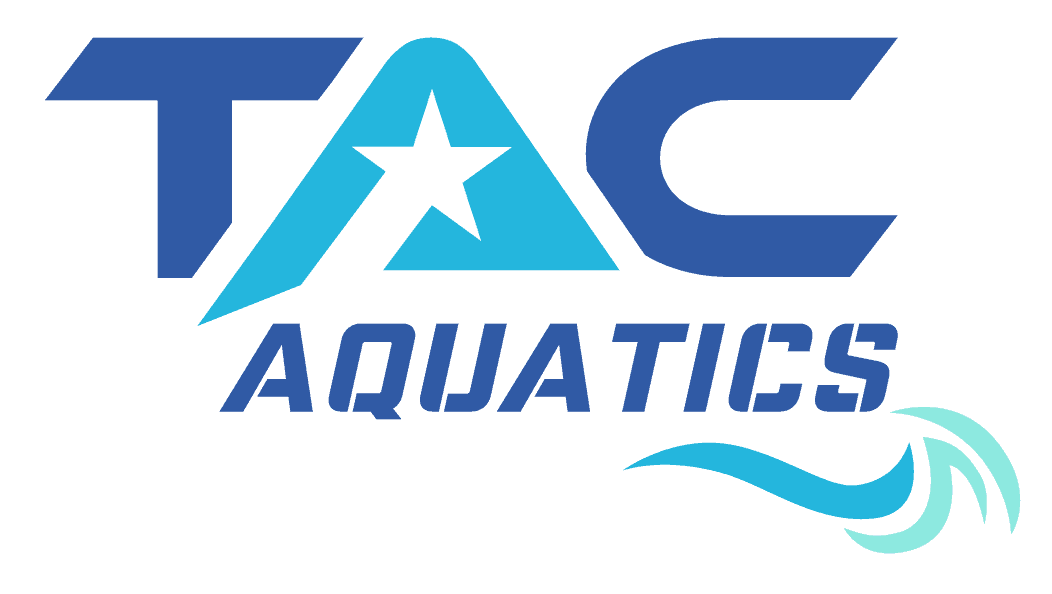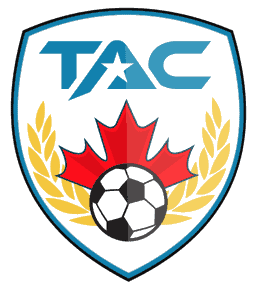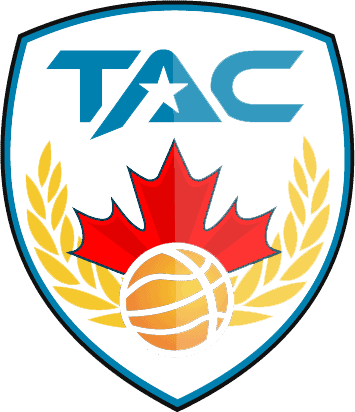Weekly Swimming Lessons
Lifesaving Society Curriculum
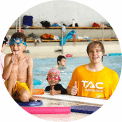
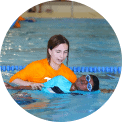
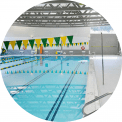
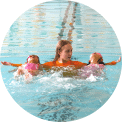
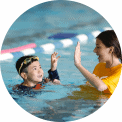

Learn to Swim Lessons Ages 2 -17
Bronze, National Lifeguard, and First Aid Certifications
Locations
- Allenby Junior Public School
- St. Patrick Catholic Secondary School
- Glenview Senior Public School
- Havergal College
- York Memorial Collegiate Institute
Allenby Junior Public School
Address: 391 St Clements Ave, Toronto, ON M5N 1M2
Major Intersection: Avenue Rd and Eglinton Ave
St. Patrick Catholic Secondary School
Address: 49 Felstead Ave, Toronto, ON M4J 1G3
Major Intersection: Danforth Ave and Greenwood Ave
Glenview Senior Public School
Address: 401 Rosewell Ave, Toronto, ON M4R 2B5
Major Intersection: Avenue Rd and Lawrence Ave
Havergal College
Address: 1451 Avenue Rd, Toronto, ON M5N 2H9
Major Intersection: Avenue Rd and Lawrence St
York Memorial Collegiate Institute
Address: 1700 Keele St, York, ON M6M 3W5
Major Intersection: Keele St & Eglinton Ave
Lifesaving Society Swimming Levels
- Parent & Tot and Toddler Lessons
- Preschool 1
- Preschool 2
- Preschool 3
- Preschool 4
- Preschool 5
- Swimmer 1
- Swimmer 2
- Swimmer 3
- Swimmer 4
- Swimmer 5
- Swimmer 6
- Rookie Patrol
- Ranger Patrol
- Star Patrol
Parent & Tot and Toddler Lessons
Prerequisites: 4 Months to 3 Years
Parent and Tot 1, 2 & 3. Parent and Tot 1 begins with getting children comfortable in the water by introducing them to basic water movement, and buoyancy on front and back supported by a parent or guardian. Please refer to our complete level breakdown for more in depth information about each specific level.
Preschool 1
Prerequisites: under 7 years of age.
Level equivalency: Once the child reaches seven years of age they should move to Swimmer 1.
Preschool 1 no longer requires the parent’s attendance. The level is to be completed without the parent’s attendance and assistance. Swimmers learn the importance of supervision when swimming, introducing them to the various aspects of aquatic safety. This includes pool rules, safe entries and exits, and faculty orientation. Swimmers will be introduced to front floats, back floats, and glides.
Preschool 2
Prerequisites: under 7 years of age and successful completion of Preschool 1.
Level Equivalency: Once the child reaches seven years of age they should move to Swimmer 1.
Swimmers will build upon their safety knowledge acquired in Preschool 1. Swimming skills are increased in distance to 5 meters. Swimmers are expected to perform floats, glides, front swim, and rollover glides. To orient the swimmers with the various movements that are the basis for advanced strokes.
Preschool 3
Prerequisites: under 7 years of age, and successful completion of Preschool 2.
Level Equivalency: Once the child reaches seven years or older the equivalent level is Swimmer 1.
Preschool 3 swimmers are introduced to water weight transfer through a series games intended to have the swimmers retrieve objects from the bottom of the pool. Swimmers are also encouraged to jump into chest deep water, and learn how to change direction when swimming. Preschool 3 swimmers begin adding proportionally kicks to their glides and are expected to be able to recover from floats on their own.
Preschool 4
Prerequisites: under 7 years of age, and successful completion of Preschool 3.
Level Equivalency: Once the child reaches seven years or older should move to Swimmer 1.
Preschool 4 swimmers begin their orientation with deep water. They will learn to jump into deep water, do surface supports, and the introductory progression for treading water for ten seconds with PFD. Glides will increase in distance with the furthest distance being seven meters. Front crawl will be Introduced.
Preschool 5
Prerequisites: under 7 years of age, and successful completion of Preschool 4.
Level Equivalency: Once the child reaches seven years or older level they should move to Swimmer 2.
Swimmers at the Preschool 5 level will swim a maximum distance of ten meters. They will also learn new entry skills such as sitting dives. Surface support time will be 10 seconds without PFD’s, and they will improve their front crawl by removing PFD’s
Swimmer 1
Prerequisites: 7 years of age and/or Completion of Preschool 4
Swimmer 1 students will learn entries and exits. These include, entering and exiting shallow water, jumping into chest deep water, and jumping into deep water wearing a PFD. They will learn surface support methods. In this level that is treading water for 30 seconds wearing a PFD. They will learn the underwater skills such as holding their breath under the water for 5 seconds, submerging and exhaling 5 times, and opening their eyes underwater. Movement/swimming skills for level 1 include floating on their front and back for 5 seconds each; rolling laterally front to back and back to front; gliding on front/back/side; flutter kicking on front and back for 5 meters each; and front crawling with a PFD for 5 meters. Finally they will cover water smart messages as well.
Swimmer 2
Prerequisites: 7 years of age amd/or Successful completion of Swimmer 1 or Preschool 5
In Swimmer 2 swimmers learn; new entry and exit skills include jumping into deep water, returning to safety and exiting, as well as sideways entries wearing a PFD. They will learn to tread water for 15 seconds as well. They will learn the underwater skill of recovering an object from the bottom of chest-deep water. Level 2 introduces swim to survive skills, for this level it is wearing a PFD, jumping into deep water, treading for 30 seconds, and swimming/kicking for 15 meters. Movement/swimming skills include, flutter kick on back and side for 10 meters each, whip kick in a vertical position for 30 seconds with aid, and front crawl and back crawl for 10 meters each. This level also introduces fitness requirements, which is interval training of 5 meter flutter kicks with 20 second rests, 4 times. Finally they will continue to cover water smart messages
Swimmer 3
Prerequisites: Successful completion of Swimmer 2
In Swimmer 3 swimmers learn; new entry and exit skills include kneeling dives into deep water, and forward roll entries into deep water. They will learn to tread water for 30 seconds. They will learn the underwater skills such as handstands in shallow water, and front somersaults. For this level, swim to survive skills are jumping into deep water, treading for 30 seconds, and swimming/kicking for 25 meters. Movement/swimming skills include, flutter kicking on front for 5 meters then reversing direction and flutter kicking on back for 5 meters, whip kicking on back for 10 meters, and front and back crawling for 15 meters each. Fitness interval training for level 3 is 15 meter flutter kicks with 20 second rests, 4 times. Finally they will continue to cover water smart messages.
Swimmer 4
Prerequisites: Successful completion of Swimmer 3
Swimmer 4 swimmers learn; new entry and exit skill is completing a standing dive into deep water. They will learn to tread water for 1 minute. They will learn the underwater skills of swimming underwater for 5 meters. For this level, swim to survive skills are a rolling entry into deep water, treading for 1 minute, and proceeding to swim 50 meters. Movement/swimming skills include, whip kicking on front for 15 meters, and breaststroke arm drills for 15 meters. Fitness interval training for level 4 is flutter kicking for 25 meters with 20 second rests, 4 times. Finally they will continue to cover water smart messages.
Swimmer 5
Prerequisites: Successful completion of lSwimmer 4
Swimmer 5 swimmers learn; new entry and exit skills are shallow dives into deep water, and tuck jumps into deep water. They will learn to complete a jump entry into deep water and tread for 2 minutes, as well as holding the stationary eggbeater kick for 30 seconds. They will learn the underwater skill of back somersaulting. For this level, swim to survive skills are a rolling entry into deep water and treading for 90 seconds, then proceeding with swimming for 75 meters. Movement/swimming skills include breaststroke for 25 meters, front and back crawling for 50 meters each, and a head-up front crawl for 10 meters. Fitness for level 5 is sprint front and back crawling for 25 meters each; interval training of front or back crawl for 50 meters with 30 second rests, 4 times; and interval training of breaststroke for 15 meters with 30 second rests, 4 times. Finally they will continue to cover water smart messages.
Swimmer 6
Prerequisites: Successful completion Swimmer 5
Swimmer 6 swimmers learn; the new entry and exit skills are stride entries into deep water, and compact jumps into deep water. They will learn to hold a legs-only surface support for 45 seconds. The underwater skill of swimming underwater 10 meters to recover an object is taught. Swim to survive skills for this level are completing a rolling entry into deep water, treading for 90 seconds, and proceeding to swim 75 meters. Movement/swimming skills include the eggbeater kick on back for 15 meters, scissor kicking on front for 15 meters, breaststroke for 50 meters, front and back crawl for 100 meters each, and head-up swim for 25 meters. Fitness for level 6 is completing a sprint breaststroke for 25 meters; interval training of breaststroke for 25 meters with 30 second rests, 4 times; and a 300 meter workout which is made up of a 50 meter warm up (choice of stroke), 25 meter front and crawls with 15 second rests, 4 times each; and a 50 meter cool-down (choice of stroke). Finally they will continue to cover water smart messages.
Once Swimmers Complete Swimmer 6 their next levels of swimming would continue into the Canadian Swim Patrol Curriculum.
Rookie Patrol
Prerequisites: Successful completion Swimmer 6
Rookie Patrol is the first level of 3 that focuses on long distance proficiency and endurance, as well as introduces first aid. In Rookie Patrol, swimmers learn to swim 100 meters in 3 minutes. They work on swimming 25 to 50 meters with specific techniques such as lifesaving kick, front crawl, back crawl, and breaststroke. Swimmers also practice carrying objects as they swim. The first aid aspect of the Rookie Patrol level focuses on assessing conscious victims, contacting EMS, and caring for external bleeding. Swimmers are also introduced to recognition and rescue where they complete water rescue drills and practice throwing buoyant aids to a target. Please refer to our complete level breakdown for more in depth information about each specific level.
Ranger Patrol
Prerequisites: Successful completion Rookie Patrol
Ranger Patrol is the second level of 3 that focuses on long distance proficiency and endurance, as well as continues to teach first aid. In Ranger Patrol, swimmers learn to swim 200 meters in 6 minutes. They work on swimming 25 meters with specific techniques such as, stride entry and swim head-up, and Eggbeater kick on back. They also work on swimming 75 meters with specific techniques such as, front crawl, back crawl, and breaststroke. Swimmers also continue to practice carrying items as they swim. The first aid aspect of the Ranger Patrol level focuses on assessing unconscious breathing victims, caring for victims in shock, and dealing with an obstructed airway on a conscious victim. Swimmers continue to learn about recognition and rescue as well, where they complete a higher difficulty level of water rescue drills and practice throwing buoyant aids to a target 25 meters away. Please refer to our complete level breakdown for more in depth information about each specific level.
Star Patrol
Prerequisites: Successful completion Ranger Patrol
Star Patrol is the third level of 3 that focuses on long distance proficiency and endurance, as well as continues to teach first aid. In Star Patrol, swimmers learn to swim 300 meters in 9 minutes. They work on swimming 100 meters with specific techniques such as, front crawl, back crawl, and breaststroke. Star Patrol requires swimmers to carry an object 25 meters while swimming, as well as search to recover objects. Swimmers also learn to turn and support a victim face up in shallow water, and remove unconscious victims. The first aid aspect of the Star Patrol level focuses on caring for bone or joint injuries, and caring for respiratory emergencies (asthma or allergic reactions). Swimmers also perfect their recognition and rescue, where they are required to locate and describe submerged objects, and rescue a target with a towing aid for 20 meters. Please refer to our complete level breakdown for more in depth information about each specific level.
Private Lessons
- Private Lessons
Private Lessons
If your swimmer thrives in individual sessions with a coach, we offer private sessions in the pool.
Private lessons offer an opportunity for swimmers to progress more rapidly with 1 on 1 attention. Swimmers will progress through our levels more rapidly. Swim classes are available pending pool time and availability.
Available for all Ages
Pre Competitive Sessions
- Pre Competitive
Pre Competitive
Pre-competitive swim training is structured to prepare swimmers for the next level of club swimming. Each session is 1.5 hours long and includes both dry land training and pool practice.
The program’s key components focus on:
Technique Refinement: Improving stroke mechanics across all strokes to ensure swimmers build strong fundamentals.
Butterfly Stroke Training: Introducing and practicing the butterfly stroke to round out the swimmer’s skill set.
Speed Development: Working on sprinting techniques to enhance swimmers’ speed in the water.
Endurance Building: Conditioning exercises designed to increase swimmers’ stamina for longer swims.
This program provides a solid foundation, building both strength and technique to prepare swimmers for entry into competitive club swimming.
Lifesaving Certifications
- Bronze Star
- Bronze Medallion
- Bronze Cross
- Bronze Med & Cross Combo
- National Lifeguard Certification
- Standard First Aid and CPR-C
Bronze Star
Prerequisite: 12 years of age or first aid certified (Swim Patrol experience recommended.)
Bronze Star develops swimming proficiency, lifesaving skill and personal fitness. Candidates refine their stroke mechanics, acquire self-rescue skills, and apply fitness principles in training workouts. Bronze Star is excellent preparation for success in Bronze Medallion and provides a fun introduction to lifesaving sport.
Bronze Medallion
Prerequisite: Minimum 13 years of age or Bronze Star certification (need not be current) and first aid certified (Needs to be current).
Bronze Medallion challenges the candidate both mentally and physically. Judgment, knowledge, skill, and fitness – the four components of water rescue – form the basis of Bronze Medallion training. Candidates acquire the assessment and problem-solving skills needed to make good decisions in, on, and around the water.
Bronze Cross
Prerequisite: Bronze Medallion and Lifesaving Society Emergency or Standard First Aid certifications (need not be current) or EFA or SFA from one of these approved agencies.
Bronze Cross begins the transition from lifesaving to lifeguarding and prepares candidates for responsibilities as assistant lifeguards. Candidates strengthen and expand their lifesaving skills and begin to apply the principles and techniques of active surveillance in aquatic facilities. Bronze Cross emphasizes the importance of teamwork and communication in preventing and responding to aquatic emergencies.
Bronze Med & Cross Combo
Bronze Medallion challenges the candidate both mentally and physically. Judgment, knowledge, skill, and fitness – the four components of water rescue – form the basis of Bronze Medallion training. Candidates acquire the assessment and problem-solving skills needed to make good decisions in, on, and around the water.
Bronze Cross begins the transition from lifesaving to lifeguarding and prepares candidates for responsibilities as assistant lifeguards. Candidates strengthen and expand their lifesaving skills and begin to apply the principles and techniques of active surveillance in aquatic facilities. Bronze Cross emphasizes the importance of teamwork and communication in preventing and responding to aquatic emergencies.
Prerequisites: Minimum 13 years of age or completed Bronze Star.
National Lifeguard Certification
Prerequisites: minimum 15 years of age, Bronze Cross, and Lifesaving Society Standard First Aid (need not be current) or Standard First Aid from one of these approved agencies.
National Lifeguard certification is Canada’s professional lifeguard standard. National Lifeguard training develops a sound understanding of lifeguarding principles, good judgment, and a mature and responsible attitude toward the lifeguard’s role. National Lifeguard training emphasizes prevention and effective rescue response in emergencies including first aid treatment. Candidates develop teamwork, leadership and communication skills. Fitness requirements include a timed object recovery, 50 m sprint challenge, 50 m rescue drill and 400 m endurance challenge.
The National Lifeguard training program is designed for lifesavers who wish to obtain a responsible job and leadership experience. Successful candidates are certified by the Lifesaving Society – Canada’s lifeguarding experts.
View all NL Pool test items: NL Pool – At-a-glance
Standard First Aid and CPR-C
Standard First Aid provides comprehensive training covering all aspects of first aid and CPR. Standard First Aid incorporates all of Emergency First Aid and is designed for those who require a more in-depth understanding of first aid including: legal implications of first aid treatment, spinal injuries, heat or cold injuries, bone and joint injuries, chest injuries, and medical emergencies. Includes CPR-C certification.
The first aid program is not restricted to aquatic candidates. You can use the Lifesaving Society’s first aid awards to train non-aquatic staff (camp, playground, maintenance, etc.) and the general public.
Lifesaving Society Standard First Aid certification is valid for 36 months from the certification date.
